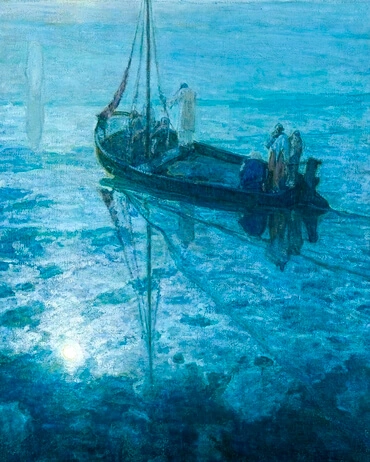59. The reason why they have been tolerated there up to the day of the Last Judgment was that God's order ensures that all are preserved who could possibly be preserved, and this until they could no longer be among good people. All therefore are preserved who can put on a pretence of spiritual life in externals and display it in their morality, as if it underlay it, no matter what they are like in internals as regards faith and love. Those too are preserved who make an external show of holiness, even if without any internal content. Many of those people were like this, able to conduct pious conversations with the common people, to adore the Lord in holy fashion, to implant religious belief in people's minds and bring them to think about heaven and hell, and make them continue to do good by preaching about good works. Many have thus been led to a life devoted to good, and so into the way to heaven. As a result many of that religion have been saved, though few of those are who led them. These are the kind of people the Lord meant by false prophets, who come in sheeps' clothing and inwardly are ravening wolves (Matthew 7:15). Prophets in the internal sense of the Word mean those who teach truth and by truth lead towards good; false prophets are those who teach falsity, and by it lead people astray.
[2] Such people are also like the Scribes and Pharisees, whom the Lord describes in these words:
They sit in Moses' chair. Everything they tell you to observe, observe and do it; but do not do works such as they do, for they speak of them but do not do them. They do all their works so as to gain men's regard. They shut the kingdom of the heavens to men, but do not enter it themselves. They devour widows' houses, and make a show of uttering long prayers. Woe to you, hypocrites, you clean the outside of the cup and plate, but inside they are full of robbery and injustice. Clean first the inside of the cup and plate, so that the outside too may be clean. You are like whitewashed tombs which are fair to look on outside but inside are full of dead men's bones. Thus you appear outwardly righteous to men, but inwardly you are full of hypocrisy and iniquity. Matthew 23:1-34.
[3] Another reason why they were tolerated is that each person retains after death the religious belief he accepted in the world. He is therefore put into that state as soon as he comes into the other life. Religious belief has been implanted in this people by those who have made a parade of holiness in speech and made a pretence of it in behaviour, also impressing on them the belief that they can offer them salvation. That too is why such persons were not taken away from them, but were kept among their own people.
[4] The chief reason is that all are preserved from one judgment until the next who have outwardly led a life resembling a spiritual one, mimicking inward piety and holiness, so that simple people can be taught and guided by them. For those of simple faith and heart do not look further than the outside they can see with their own eyes. This is why all of this nature from the beginnings of the Christian church have been tolerated down to the day of judgment. It was shown above that a last judgment has happened twice before, and is now happening for the third time. All these are those who made up the former heaven and are meant by those who were not from the first resurrection (Revelation 20:5-6). But because their nature was such as described above, that heaven was destroyed and those who were from the second resurrection were cast out.
[5] But it should be known that the only ones to be preserved were those who had allowed themselves to be held in check by civil as well as spiritual laws, since these could be kept together in a community. But those who could not be held in check by these laws were not preserved; they were thrown into hell long before the day of the Last Judgment, for communities were continually being purified and purged of such people. Hence it is that those who have led a life of crime and have induced the common people to do wicked deeds, entering into unspeakable tricks such as are practised by those in the hells (described in HEAVEN AND HELL 580), have been expelled from their communities, and this has happened from time to time.
[6] Equally the inwardly good too are removed from communities, so that they are not contaminated by those who are inwardly wicked. For those who are good perceive what is within and pay no attention to exterior appearance, except so far as it matches the interior. From time to time before judgment these are sent to places of instruction (on which see HEAVEN AND HELL 512-520), and from there are carried off to heaven. These are those who will compose the new heaven and who are meant by those from the first resurrection. This has been said to make it known why so many of those of the Roman Catholic religion were tolerated and preserved until the day of the Last Judgment. More on this subject will be said in the next chapter, which will deal with the former heaven which passed away.







